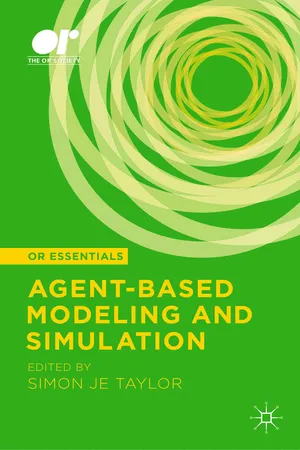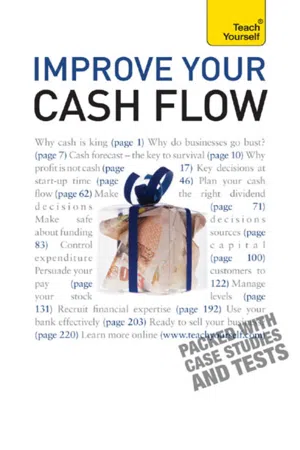Credit Decisions
Credit decisions refer to the process of evaluating a borrower's creditworthiness to determine whether to extend credit or a loan. This involves assessing the borrower's financial history, credit score, and ability to repay the debt. The decision ultimately impacts the lender's risk exposure and the borrower's access to financing.
3 Key excerpts on "Credit Decisions"
- eBook - ePub
The Bank Credit Analysis Handbook
A Guide for Analysts, Bankers and Investors
- Jonathan Golin, Philippe Delhaise(Authors)
- 2013(Publication Date)
- Wiley(Publisher)
...This conviction necessarily rests upon two fundamental principles; namely, the creditor’s confidence that: 1. The borrower is, and will be, willing to repay the funds advanced 2. The borrower has, and will have, the capacity to repay those funds The first premise generally relies upon the creditor’s knowledge of the borrower (or the borrower’s reputation), while the second is typically based upon the creditor’s understanding of the borrower’s financial condition, or a similar analysis performed by a trusted party. 4 DEFINITION OF CREDIT Consequently, a broad, if not all-encompassing, definition of credit is the realistic belief or expectation, upon which a lender is willing to act, that funds advanced will be repaid in full in accordance with the agreement made between the party lending the funds and the party borrowing the funds. 5 Correspondingly, credit risk is the possibility that events, as they unfold, will contravene this belief. SOME OTHER DEFINITIONS OF CREDIT Credit [is] nothing but the expectation of money, within some limited time. —John Locke Credit is at the heart of not just banking but business itself. Every kind of transaction except, maybe, cash on delivery—from billion-dollar issues of securities to getting paid next week for work done today—involves a credit judgment. . . . Credit. . . is like love or power; it cannot ultimately be measured because it is a matter of risk, trust, and an assessment of how flawed human beings and their institutions will perform. —R. Taggart Murphy 6 Creditworthy or Not Put another way, a sensible individual with money to spare (i.e., savings or capital) will not provide credit on a commercial basis 7 —that is, will not make a loan—unless she believes that the borrower has both the requisite willingness and capacity to repay the funds advanced...
- eBook - ePub
- S. Taylor(Author)
- 2014(Publication Date)
- Palgrave Macmillan(Publisher)
...When house prices started falling—mortgage defaults increased, thus triggering the financial crisis (eg, Mizen, 2008). Banks, however, differed in the extent to which they suffered from credit losses in this crisis. Researchers and practitioners have offered various explanations for these differences. Some have argued for bank-level governance explanations, such as differences in incentive structures (Kirkpatrick, 2008). Others have supported country-level explanations such as differences in capital requirement regulations (Beltratti and Stulz, 2009). Because of differences in corporate management and/or country regulations, bankers exhibited different levels of risk aversion in credit decision processes and were thus exposed to various degrees of risk as the crisis emerged. In this paper, the term credit decision process refers to the decision that a banker makes as to whether to grant credit to a client. The term post-credit decision process refers to the actions of a banker when clients are incorporated into the bank’s credit portfolio. Although the factors that affect the credit decision process have been previously investigated, the post-credit decision process has received less attention. Because a financial crisis can dramatically increase the credit risks of individual clients, post-credit decision actions are of substantial importance. The aim of this study is to investigate the effects of individual bankers’ post-credit decision actions on bank credit losses. The method involved the distribution of a survey to bankers with permission to grant credit to firms and an agent-based model (ABM). The survey provides information on the microfoundation of the banker agents, and the ABM is used to investigate the implications of bankers’ actions on the risk of the bank’s credit portfolio...
- eBook - ePub
- Robert McCallion, Alan Warner(Authors)
- 2010(Publication Date)
- Teach Yourself(Publisher)
...Therefore it is important to explore options to change the business model and substantially reduce the need to hold stock, without impacting customer service or losing the essential competitive advantage. It is not easy to achieve this balance but, as Dell has shown, the rewards are high. Nor is Dell a ‘one-off’ in this respect. Many on-line retailers – with Amazon as the first and most well known – have managed to develop a model that achieves the joint benefits of superior service and lower stock levels. Key decisions around credit to customers We have already covered many of the issues involved in the first three chapters, because terms of credit are so fundamental to cash flow. There will also be further coverage in Chapter 8, along with the importance of collecting the money in line with agreed terms. Insight Decisions around credit given to customers or taken from suppliers are a delicate balance between financial and non-financial factors. If it was purely a financial decision, life would be simple: get customers to pay cash on delivery and take six months’ credit from suppliers! We can summarize the main start-up issue by confirming two key questions that should guide your decision-making process: What are the normal terms of credit in the sector where we are operating? Is it realistic for us to offer anything different from the norm? The emphasis so far has been on options to improve cash flow and risk by asking for payment more quickly than the norm. Our message has been that this is unlikely to be possible unless you have a product with exceptional competitive advantage...


